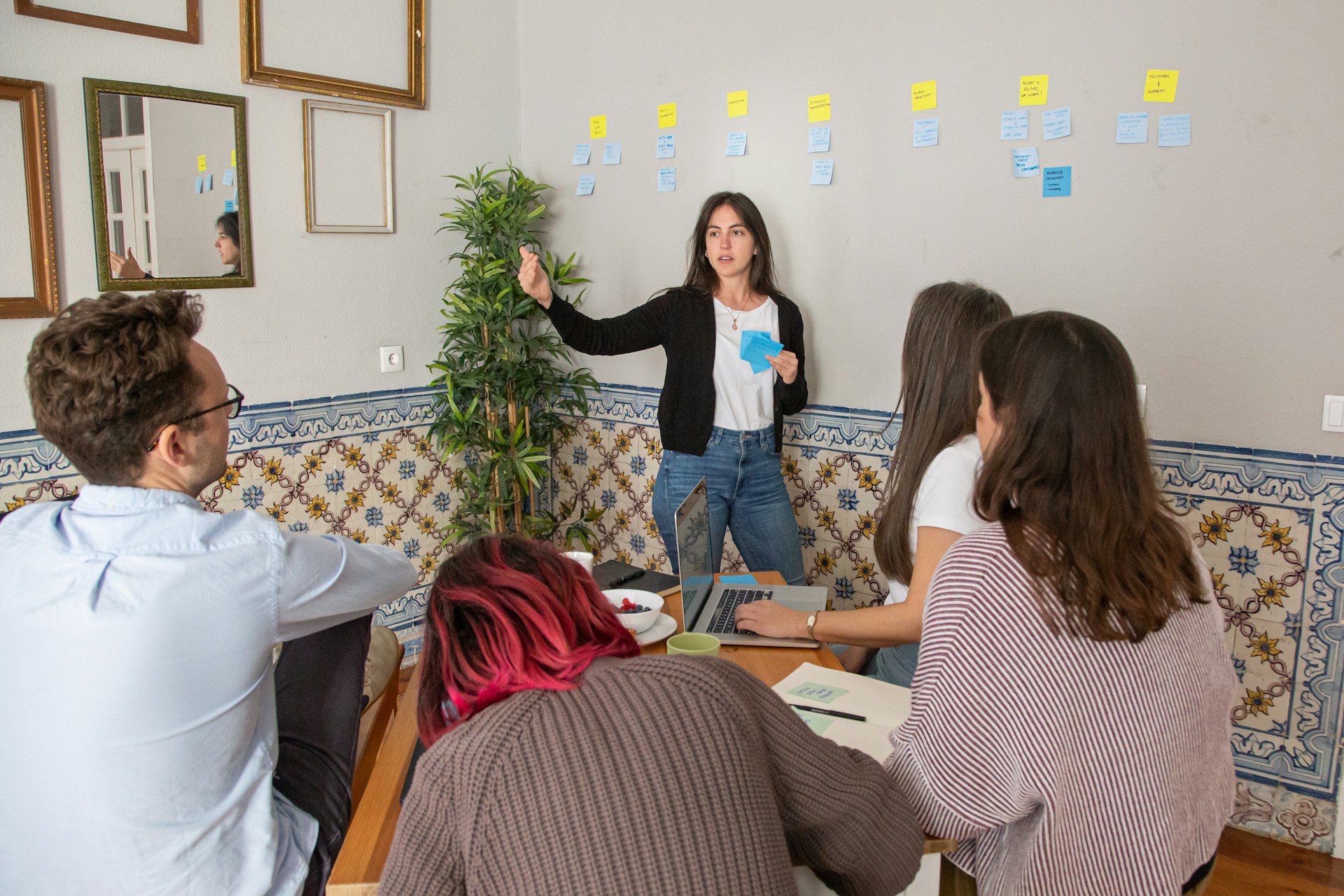Virtual Diversity and Inclusion Activities Build Safe, Welcoming Workplaces

Many companies today are focusing on diversity and inclusion activities as a way to foster a welcoming, nurturing and more inclusive workplace. Quite simply, making everyone feel involved and engaged is the right thing to do. An easy way to remember the true meaning of diversity and inclusion is to think of diversity as being asked to the dance, and inclusion as being asked to dance.Everyone deserves to show up to work as their authentic self and be included, respected, valued and even celebrated. Fostering an environment where empathy, understanding and a sense of belonging are intrinsic to an organization’s culture is what allows someone to say, ‘not only have I found somewhere that I can work and be myself, but I’m also going to be respected, engaged with and actually feel that I belong.’But how do you begin the conversation and process of making your organization a more inclusive place? Most of us have been in a Zoom environment or virtual event within the past two-plus years, and we know that what we present on the screen is not truly how we are. In a virtual environment, it is not easy to start conversations about people’s backgrounds, challenges, goals, aspirations or what makes them tick.Virtual diversity and inclusion activities (DEI activities) for remote team building are great ways to spark conversations and start the ball rolling. The best online DEI activities encourage employees to get to know each other better. They inspire curiosity. The help people feel included in the culture and connected to the company. And they create an environment that allows people to feel comfortable being themselves.
What are belongingness and uniqueness?
Creating an inclusive culture that also embraces diversity in the workplace doesn’t end with the practices of integrating the philosophies of diversity and inclusion and a diversity training or two. Instead, companies must adapt, embrace and foster methods that help create a sense of belongingness and uniqueness in their workforce, so all employees feel included. What does that mean?
What is belongingness in the workplace?
Psychologist Carl R. Rogers defines belonging as the desire for connection with others and a need for positive regard and interpersonal connection. He also claims that it comes from the individual’s perception of the meaning, quality and satisfaction with their social connections, and not from their participation with or proximity to other individuals and groups. When employers fail to create a sense of belonging for their employees, it leads to a significant number of them feeling isolated—as many as 40%.An organization with isolated workers won’t achieve success when it comes to its diversity, equity and inclusion (DE&I) programs. Regardless of how inclusive or diverse a firm’s leadership believes their culture to be, isolated employees don’t feel or foster an overall sense of inclusion.
What is uniqueness in the workplace?
No individual is solely defined by one characteristic alone. People crave recognition and acceptance for their individual experiences, values, backgrounds, skills, ambitions, etc.What tends to occur in many organizations is the propensity to lock individuals into groups based on one characteristic, e.g., race, skin color, cultural background, etc. However, doing that means the employer overlooks everything else that makes a worker unique, because no employee falls neatly into just one category. Failure to recognize that employees can have complex identities and backgrounds will ultimately damage a business’s DE&I efforts. Conversely, when companies truly understand and embrace the uniqueness of each employee, their workers will feel valued, heard and included as individuals.
The benefits of belongingness and uniqueness in the workplace
There are many benefits to ensuring your organization is diverse and inclusive, such as increases in innovation and revenue and better decision-making. However, if diversity is prized but inclusion is ignored, misunderstood or forgotten, there can be more conflict and a tendency toward groupthink. These negative phenomena can limit an organization’s efficiency and hamper its ability to develop new projects and ideas.To minimize conflict and resistance to new ideas and new ways of thinking, organizations should create a company culture where all individuals feel they belong and that leaders and colleagues see and value their unique perspectives.Besides innovation and a reduction in conflict, the benefits of a company culture of belongingness and uniqueness also include:
- High-quality relationships between group members
- A sense of psychological safety
- Increased job satisfaction
- High intention to stay with the company
- Improved job performance
- A rise in organizational citizenship and organizational commitment
- A boost in wellbeing
- Increased creativity
- More career opportunities for diverse employees
DEI activities work best when leaders take the lead
Studies show that companies that foster inclusion and diversity in the workplace tend to perform better financially. A Boston Consulting Group study found that companies with more diverse management teams have 19% higher revenues due to innovation that is unleashed when decision makers share divergent viewpoints and ideas.According to Harvard Business Review, diversity and inclusion activities work best when they start from the top. When executives are involved from the beginning, their desire to build an inclusive culture carries weight. They have influence. Most importantly, they can create organizational change. Business leaders must be as intentional about building a diverse workforce as they are about nurturing one.
5 virtual diversity and inclusion activities that you can try right now
These five virtual diversity and inclusion activities will help your remote team learn more about each other and grow together—a key aspect of employee engagement. You can spark connection and meaningful dialogue with these ideas while accomplishing your diversity, equity and inclusion goals. Each of the following DEI activities combines learning with interactive fun—a magic formula that conjures up the best results.
#1 Start a book or media club
Fostering diversity in the workplace begins with acknowledging and understanding different viewpoints. Discussing a shared book, article, documentary or other meaty content with coworkers is a meaningful way to bond and learn new perspectives together. Start the activity by choosing something thought-provoking that explores diversity and inclusion themes. Then, host a video conference that enables your team to share their thoughts and insights. If time is tight, a more free-flowing option is to develop Slack channels where titles can be discussed as ongoing conversations.Be sure to rotate the choice of book, article, movie, etc. through the participants so an array of topics gets their due. And consider those behind the scenes—writers, editors, financial backers, cinematographers, etc. What decisions about the content have they made and why? That can be just as powerful as examining the faces/voices that are front and center.Publish what the club is focusing on across your internal communications channels, too. Drop in insights from the discussions (anonymous or attributed, as per the contributor’s preference). People may feel comfortable joining the club, but they may still be intrigued enough to take up the topic on their own. Either way, it’s a win for the organization.
#2 Discover shared life experiences
Remember those “Most Likely To” pages in your yearbook? Who knows if any of that actually ended up happening, but now that people are out in the working world—remotely—the premise can be dusted off to start conversations that can help us understand each other a bit more.Zoom and other such tools can make interactive conversations possible, no matter where people are dialing in from. Instead of “most likely to,” which puts the power in the hands of others, try a “two truths and a lie” structure and have the employees themselves gin up their own answers. A quick tutorial:
- Ask employees to write down two truths and a lie about themselves. Let their personality shine through. If they want to be matter-of-fact, so be it. Fanciful or funny? Fine.
- They or whomever is running the call then shows/reads the statements and asks everyone else on the call to figure out which one is the lie. Participants write down, 1, 2 or 3 on a piece of paper, then show their answers to the camera simultaneously.
- Once the votes are in, it’s the employee’s turn to reveal the right answer and elaborate if they wish.
- Keep track of right answers. You can go one of two ways—1) when people are wrong, they’re out of the game and simply listening until there’s only one remaining; 2) set a time limit and when time is up, whoever guessed correctly most often wins.
- Make the reward enticing enough to encourage employees to participate.
Although the statements employees come up with may seem trivial, they can lead to a sense of belonging, feelings of acceptance, deeper conversations with others after the fact, or simply camaraderie based on shared experiences.
#3 Learn about people’s history and culture through food
Food is culture. Food is memory. And food, when people are passionate about it, is a great conversation-starter. Ask people to contribute a recipe that is meaningful to them for whatever reason—could be because it reminds them of their nana or because it reminds them why they really, truly hate to cook.Once you’ve collected the recipes, create and distribute the cookbook to the team and let the conversation begin. On your virtual events, rotate through recipe contributors and have them tell the story behind it in whatever way they choose to do so. You might learn something poignant, funny or simply interesting. You might also learn that you have more in common than you think. After all, everybody has to eat something.
#4 Share the story behind your name
There's power in a name. In fact, many of us have invested our personal identities with our names to such an extent that they are almost identical in our minds. Addressing someone by their name can help build respect, connection and familiarity. One of the most popular virtual diversity and inclusion activities is to host a "name story" session, where each team member takes a turn sharing their full name and the story behind it. For example, the name may originate from a relative, song or place. It may have a special meaning in your culture. You can also share childhood nicknames, what you love or loathe about your name, etc. Here's a step-by-step guide to hosting a name story activity during a virtual event.
#5 Virtual art gallery
Virtual art galleries are one of the more creative online diversity and inclusion activities. Send instructions to your virtual meeting attendees to find an artwork created by an artist of a certain community, then set that image as their virtual background. Try to include only lesser-known, emerging and/or local artists, or leave the choice up to employees. Open the meeting by talking briefly about the artwork and the artist, or type this information into the chat. This activity is a quick and creative way to celebrate a diverse workforce and add variety to Zoom meetings. It’s also a good way to discover new art.
Digital coaching embraces diversity and fosters inclusion
Activities like the above help educate people and get them over the initial speed bump of interacting successfully with environments and individuals they don't fully understand. Coaching can also help people raise diversity and inclusion issues appropriately to their managers and talent teams about feeling left out or unincluded, especially in a way that brings people in, rather than calling them out.Learn more about CoachHub's digital coaching platform, which is highly personalized, uniquely scalable and measurable. We provide functionality at your fingertips. Our digital coaching is a proactive and strategic approach that empowers all employees to embrace diversity, foster inclusion and drive sustainable behavior.
FAQ
Yes, executive coaching plays a key role in retaining and engaging senior leaders by giving them space to reflect, grow, and lead with purpose. Through individualized support, executives strengthen communication, decision-making and resilience — all of which drive engagement and long-term satisfaction.
With CoachHub Executive™, organizations not only see improved leadership performance but also greater alignment, motivation and confidence among their top talent, resulting in higher retention and a stronger leadership pipeline.
CoachHub Executive™ goes beyond one-to-one sessions by integrating technology, measurable insights and continuous learning into every coaching journey. Each executive benefits from personalized matching with certified coaches and flexible session formats to reinforce development between sessions.
While traditional coaching often lacks scalability or measurable tracking, CoachHub ensures impact visibility through data-driven dashboards, 24/7 scheduling flexibility and a consistent, high-quality experience for leaders worldwide, that can be tailored to your organization's goals.
Yes, executive coaching is delivered across 90 countries in 40+ languages, with localized coach networks that meet the cultural and business needs of global organizations.




.svg)


.svg)

.jpeg)



.png)



